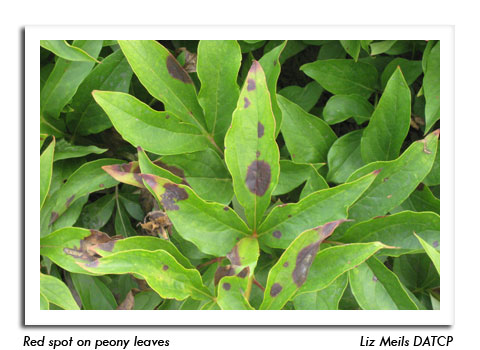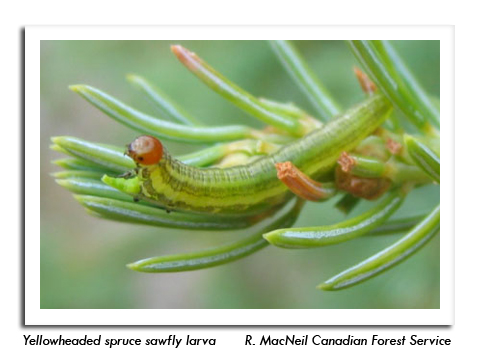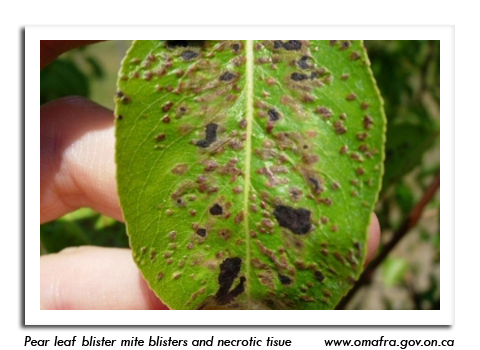
 |
|
|
Nursery & Forest
Volume 58 Number 10 Date 07/11/2013 PEONY RED SPOT - Peonies at garden centers in Dane and Rock counties were infected with this fungal disease, characterized by small, circular, reddish or purplish leaf spots that appear on the upper surfaces of young leaves shortly before bloom. Later in the season the lesions expand and merge to form large, irregular blighted areas. All above-ground parts of the peony are susceptible to red spot. This disease can be controlled by cutting back plants to ground level in fall and destroying infected foliage. Fungicides are also an effective control and should be applied to the soil around plants in spring, when new shoots are 2-4 inches tall. A second post-emergence application may be necessary. YELLOWHEADED SPRUCE SAWFLY - Nursery inspections in the past week found the larvae of this species feeding on Black Hills spruce in Washburn County. The olive green larvae with six gray-green dorsal and lateral stripes are gregarious feeders that quickly consume the needles of infested white, black and blue spruce, sometimes killing trees after 3-4 years of consecutive defoliation. Feeding occurs for a period of 4-6 weeks and usually subsides by mid-July as the larvae mature. Insecticidal soaps directed against the young larvae will usually give reasonable control if applied as soon as they are noticed. Severe infestations of older larvae may require a residual insecticide spray. -- Liz Meils, DATCP Nursery Inspector LEAF BLISTER MITE - Leaf blisters caused by this mite were observed on crabapple and Luscious pear at nurseries in Marquette and Polk counties. The blisters, which form on the surface of leaves and fruits, develop in response to feeding by adult female mites and their young nymphs. Severe blister mite infestations can cause indirect damage such as reduced shoot growth and early leaf drop, while direct feeding on the fruits results in scarring that may render fruits unmarketable. Although most Wisconsin orchards and nurseries with integrated pest management programs seldom experience serious blister mite infestations, these arthropods can be controlled by treating trees in fall, as adult females are migrating from the blisters to the terminal buds to overwinter. It is not known exactly how the mites spread from tree to tree, but dispersal by wind, birds and insects is suspected. -- Ellen Hermanson, DATCP Nursery Inspector 



|
|
|